Disclaimer: Moving Health Care Upstream is a collaborative effort originally co-led by Nemours Children’s Health System (Nemours) and the Center for Healthier Children, Families & Communities at the University of California- Los Angeles (UCLA). The views and opinions expressed in this article are those of the author(s) and do not necessarily reflect the official policy or position of Nemours, UCLA or the Moving Health Care Upstream initiative.
COVID-19 has changed the landscape of health care, both in the short term and likely in the long term as well. Nemours Children’s Health System (Nemours) has always committed to a patient- and family-centered approach as the bedrock of the high quality care that children and families receive when they come to us. Yet, since the pandemic began, routine and emergent care have been interrupted as we all work together to slow the spread of the virus. At the same time, kids still need health care, and foregoing care can carry significant risk. Fortunately, Nemours had already made significant investments in telehealth capacity and has been providing virtual care for the last five years to supplement our in-person services.
In a recent op-ed published in The Hill, Nemours’ CEO Dr. Larry Moss said, “Telehealth offers a promising way back to health for patients and healthcare systems. As a surgeon, I see more efficient and effective care for patients. As a health system CEO, I see a path back to financial stability that optimizes patient care. As an optimist, I see a transformational opportunity for our health system to make 10 years of progress in 10 weeks.”
To aid in that transformation, Nemours has been participating in multiple efforts to advance telehealth policy change. At this moment, two specific policy opportunities are now on the horizon! In partnership with Congresswoman Lisa Blunt Rochester (D-DE) and Congressman Michael Burgess, MD (R-TX), we’ve supported the development of the TIKES Act to take steps in this direction. Introduced on October 1, 2020, the bill would:
- Provide states with guidance and strategies to increase telehealth access for Medicaid and Children’s Health Insurance Program (CHIP) populations
- Require a study examining data and information on the impact of telehealth on the Medicaid population
- Require a study that reviews coordination among federal agency telehealth policies and examines opportunities for better collaboration, as well as opportunities for telehealth expansion into early care and education settings
Additionally, Representatives Gus Bilirakis (R-FL) and Darren Soto (D-FL) worked together to introduce the EASE Behavioral Health Services Act, which would expand access to tele-mental health services for Medicare beneficiaries and provide additional guidance to states for tele-mental health services for children enrolled in Medicaid.
We all know that COVID-19 has been an enormous challenge for families, clinicians and everyone in between, but it has also shown us what’s possible when it comes to telehealth. Because of the need (and in some cases, requirement) to stay home, the full power and potential of telehealth has been unleashed. In the early months of the pandemic, Nemours’ telehealth program saw a 2400% increase in virtual visits. That’s an average of more than 1,500 visits per day, ranging from emergent to routine to specialty care.
As Dr. Moss highlighted in his op-ed, the opportunity to make significant progress on telehealth – something Nemours has long advocated for – is now upon us although many policy challenges persist. For example, practicing telehealth across state lines carries a unique set of challenges, compounded by the complexity of working with multiple Medicaid programs, managed care organizations (MCOs) and private payers – all of which have widely different rules on coverage, reimbursement, licensing/credentialing and other restrictions. The industry also lacks comprehensive data on the overall impact of telehealth as a care modality, making extensive policy change more difficult.
However, policymakers have been taking positive steps forward as part of the pandemic response. These have come in the form of Medicaid 1135 waivers, gubernatorial and presidential Executive Orders, additional guidance from the federal government, and an injection of federal grant funds to expand telehealth capacity. The challenge is that nearly all of these actions are temporary. Nemours calls on policymakers to make these changes permanent.
Additionally, both of the bills outlined above would help make lasting changes to advance public policy to meet the needs of children and families across this country, throughout this pandemic and beyond. As Dr. Moss so succinctly put it, we have a transformational opportunity to make lasting progress toward better, more affordable and more patient-centered care. We call upon our leaders to seize it.
